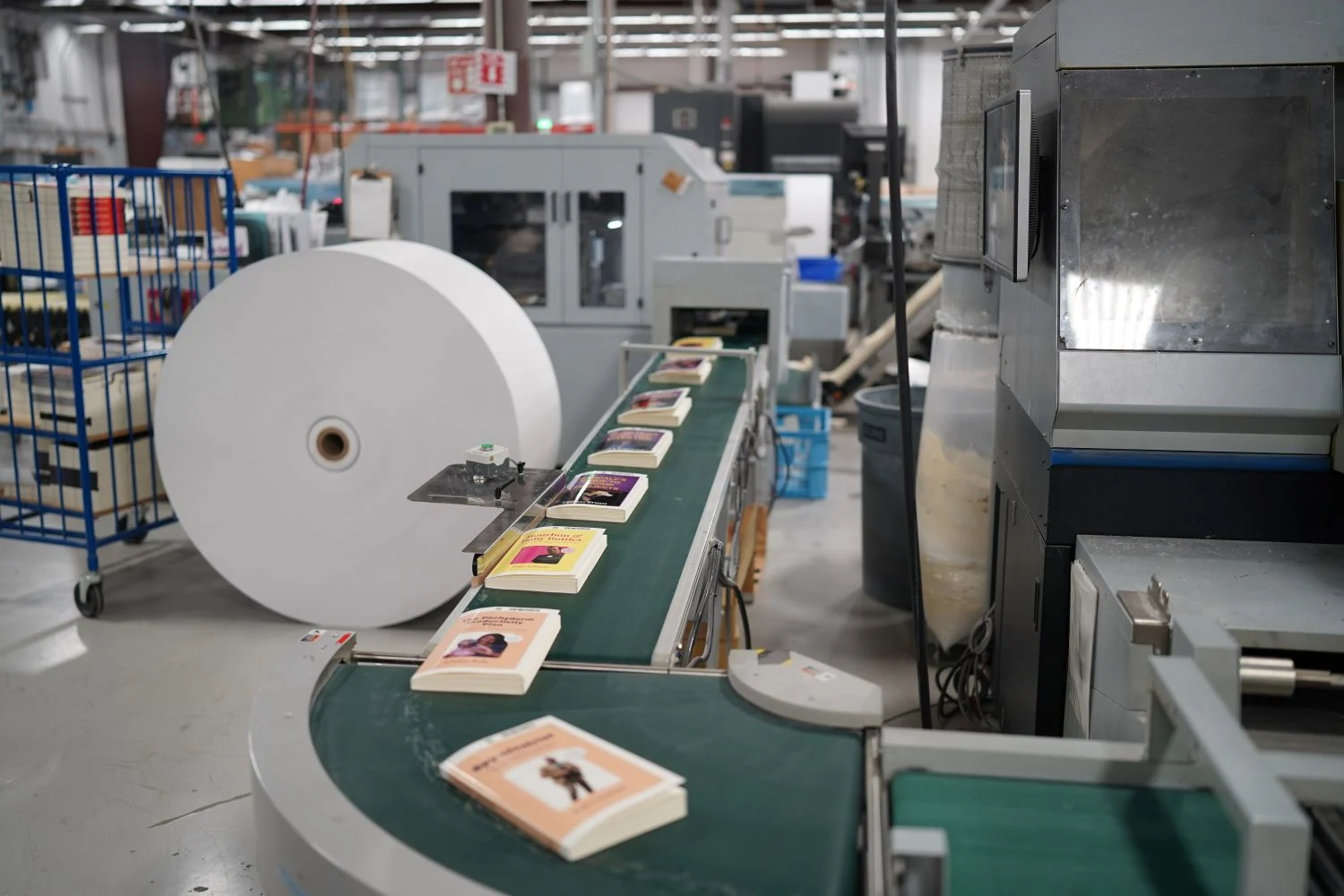Sustainability has moved from a nice-to-have to a core buying criterion for brands with complex print programs. At the same time, marketing calendars are tighter and content refreshes are constant. Digital printing brings these priorities together by enabling print-on-demand while reducing waste across the lifecycle. When evaluated through materials, chemistry, energy and logistics, digital inkjet and digital toner can deliver measurable environmental advantages over conventional offset in certain scenarios.
Why Digital Belongs in a Sustainable Mix
Offset remains a workhorse for large, static runs, yet it carries unavoidable setup steps, like imaging plates and using paper to dial in color during make-ready. Digital devices eliminate the need for plates, saving time and materials. This is especially impactful for versioned catalogs and short-run books where accuracy and speed matter more than the lowest unit cost at very high volumes.
Aqueous Inks and Cleaner Chemistry
Most high-speed inkjet systems use aqueous pigment inks that are water based with very low VOC profiles. Volatile organic compounds (VOCs) are chemicals, typically gasses, that are emitted by certain products or during manufacturing processes. Materials with low VOC profiles have been tested and do not contain a large amount of VOCs that are harmful to human health or the environment. That means fewer concerns about emissions and fewer burdens on air quality.
Many workflows also pair aqueous inks with water based primers and coatings, which simplifies environmental health and safety considerations and supports recyclability. Digital toner presses use dry toners that are fused with heat rather than liquid carriers, so there is no ink cleanout water and no solvent washups between jobs. Fewer liquids in the process can mean fewer touchpoints for waste and fewer steps to manage and document.
No Plates, Fewer Consumables
In terms of sustainability, the aluminum plates used in offset printing have come a long way since the early days of printing presses. However, digital printing removes plate prep and plate disposal entirely. There is no fountain solution to monitor, no blanket washes between color changes and far fewer rags to launder or discard. For operations teams, this simplifies compliance and reduces the number of materials to source, store and track. For sustainability teams, it removes upstream impacts that would otherwise be spread across every piece in the run.
Digital Toner vs. Digital Inkjet
Both digital toner and inkjet reduce make-ready waste and enable on-demand production, yet each has distinct sustainability traits. Toner presses apply color with precise control and waste virtually no colorant during startup. They excel on coated text and cover stocks, deliver tight registration for smaller fonts and maintain color consistency job to job. Modern low-melt toners reduce fusing temperature, which can cut energy draw while expanding compatibility with heat-sensitive substrates.
Aqueous inkjet places color without heat fusing, which can lower energy per impression. Inkjet systems may require periodic head maintenance that generates purge waste, and some applications benefit from primed or inkjet-treated papers. Balancing those factors against the energy and chemistry profile often still nets an environmental win, especially when you factor in the overproduction reduction that on-demand workflows unlock.
Paper Choices and Recyclability
Paper selection is pivotal. Choose FSC or SFI-certified papers with appropriate recycled content based on your surface and brightness needs. For inkjet, use stocks engineered for aqueous inks when image quality matters since they improve color density and reduce total ink usage. For toner, choose papers with robust surface sizing to support fusing without excessive heat. Favor water based coatings where possible. High-build UV effects or heavy laminations can complicate repulping – when durability is required, consider aqueous barrier coatings or recyclable soft-touch films with a proven track record for sustainability.
Deinking performance is another consideration. Aqueous pigment and toner images are typically compatible with modern deinking systems. Extremely heavy coverage or specialty effects can make fiber recovery more difficult. Engage your print partner early to pick combinations of paper, ink and finishing that preserve downstream recyclability.
When Offset Still Wins
Offset continues to shine on long, static runs with predictable demand. Once an offset press is up to color, its per-sheet energy and consumable use are hard to beat. If the content will not change for months or you’re planning larger runs, offset may be the most responsible choice. Many offset presses have moved to vegetable based inks, optimized wash routines and waterless or low-alcohol systems that further reduce environmental impacts. Sustainable procurement is about picking the right tool for the job, not forcing a single method everywhere.
How to Start With Eco-Friendly Digital Workflows
Begin with a program audit. Identify titles or SKUs that overrun, expire or require frequent versioning. Shift those to digital first. Set clear reorder points so replenishment happens in small, predictable waves. Standardize on a family of papers that work across toner and inkjet to streamline buying and reduce partial pallets. Define coating and finishing rules that protect design intent without compromising recyclability. Build color management once, then reuse profiles across devices. Finally, capture metrics. Track obsolete inventory, emergency freight and cycle time so your team can quantify environmental and financial gains.
Explore Sustainable Printing With Walsworth
Digital inkjet and digital toner give high-value brands a practical path to lower waste and faster response. Aqueous inks and dry toners simplify chemistry, plate-free workflows remove upstream impacts and right-size production trims the largest source of waste in many programs. Offset retains a strong role for large static campaigns. The most sustainable print strategy blends methods based on run length, content volatility and quality goals.
As an FSC and SFI-certified printer, Walsworth is proud to support its partners with sustainable printing options that are friendly to the environment, as well as their budgets and schedules. If you’d like to learn more about what Walsworth has to offer, get in touch with us today.
* This article was developed with assistance from OpenAI’s GPT 5 Pro Deep Research large language AI model.






